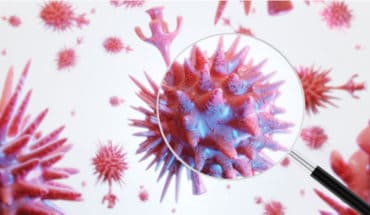Over the last 10 years, since I founded the charity Medical Detection Dogs, I have seen for myself what things these amazing dogs are able to do for human beings. Even before that, I was aware of the incredible benefits dogs could bring. When I qualified as a behavioural psychologist at Swansea and Warwick Universities, I worked in assistance dogs training with the charity, Hearing Dogs for Deaf People. Those dogs changed lives for the better.
It was also there that a young colleague told me that her dalmation dog had saved her life by constantly pawing and licking at a mole on her leg. The dog was so persistant that she took herself to the GP and asked for the mole to be examined. It turned out to be a malignant melanoma which had not yet spread, so the mole was removed and she was cancer free. That made me think very seriously that not only could dogs help people who were blind or deaf, but they might be able to diagnose diseases at a very early stage long before patients, or their doctors were aware that they even had a problem.
It wasn’t until many years later that I had the opportunity to act on this insight into the wonderful ability of dogs to smell out trouble.
It wasn’t until many years later that I had the opportunity to act on this insight into the wonderful ability of dogs to smell out trouble.
I was listening to Dr John Church talking on the radio about alternative ways to treat disease. He was the man who successfully reintroduced the idea of using maggots to clean wounds. He also talked about anecdotal evidence that dogs could ‘smell’ cancer. He had documented around 25 different stories very similar to my friend’s and he was looking for people to help him investigate this phenomenon. After the radio programme was over, I contacted him and I found out he lived just 20 minutes away from me. By that afternoon, we were sitting together discussing ways forward.
Our first project as Medical Detection Dogs was a trial to see if we could train dogs to detect bladder cancer. Over my career, I have trained many different animals to carry out many different tasks, using rewards and incentives to help them understand what we were looking for. This took many months, but we were happy that we had six dogs who could take part. We teamed up with the Bucks NHS Trust and began a proof of principle double blind study to see if our trained dogs could detect the odour (VOC’s) from bladder cancer cells in urine samples. We didn’t know which samples contained bladder cancer cells so we couldn’t inadvertently assist them in their choice. At that time, the best dogs scored 56 per cent reliability at signalling the bladder cancer samples, which was significant.
With further training, our dogs became much more proficient at detecting cancer cells, as you would expect.
With further training, our dogs become much more proficient at detecting cancer cells, as you would expect.
Cancer and other diseases don’t have a single odour. Instead, there are multiple notes in different concentrations and different arrangements in different people. Now, in training trials, our dogs routinely score around 95 per cent accuracy rates because they have been given hundreds of different samples to smell and know a much greater range of possibilities. Researchers in other parts of the world have replicated our results. An Italian team who published their work in the European Journal of Urology showed that trained dogs could detect prostate cancer at around 96 per cent reliability.
This is also why electronic noses fail consistently to detect disease reliably because they can’t distinguish the subtle different notes in an aroma and compute all the myriad variations. A dog’s nose is a sophisticated biosensor which outperforms technology for now. However the research of our dogs can help the machines find the solution.
Our latest study, which has been ongoing for a year and should finish by the end of 2018, involves 3000 patients from Milton Keynes University Hospital, a number of whom have prostate cancer. We are still in the training phase, but things are moving forward. We hope that this large scale study will provide the evidence that we need to persuade people that dogs can be used alongside conventional diagnostic tests to provide answers for people with prostate cancer. The PSA test, which is used routinely at the moment, has a 75 per cent false positive rate, which is less than ideal.
No one is saying that dogs should usurp conventional diagnostic methods, but they can and should be used as a powerful extra tool to ensure that people are diagnosed at early stage disease when they have the best possible chance of a good outcome.
- Amazing dogs changing lives for the better - 4th June 2017






